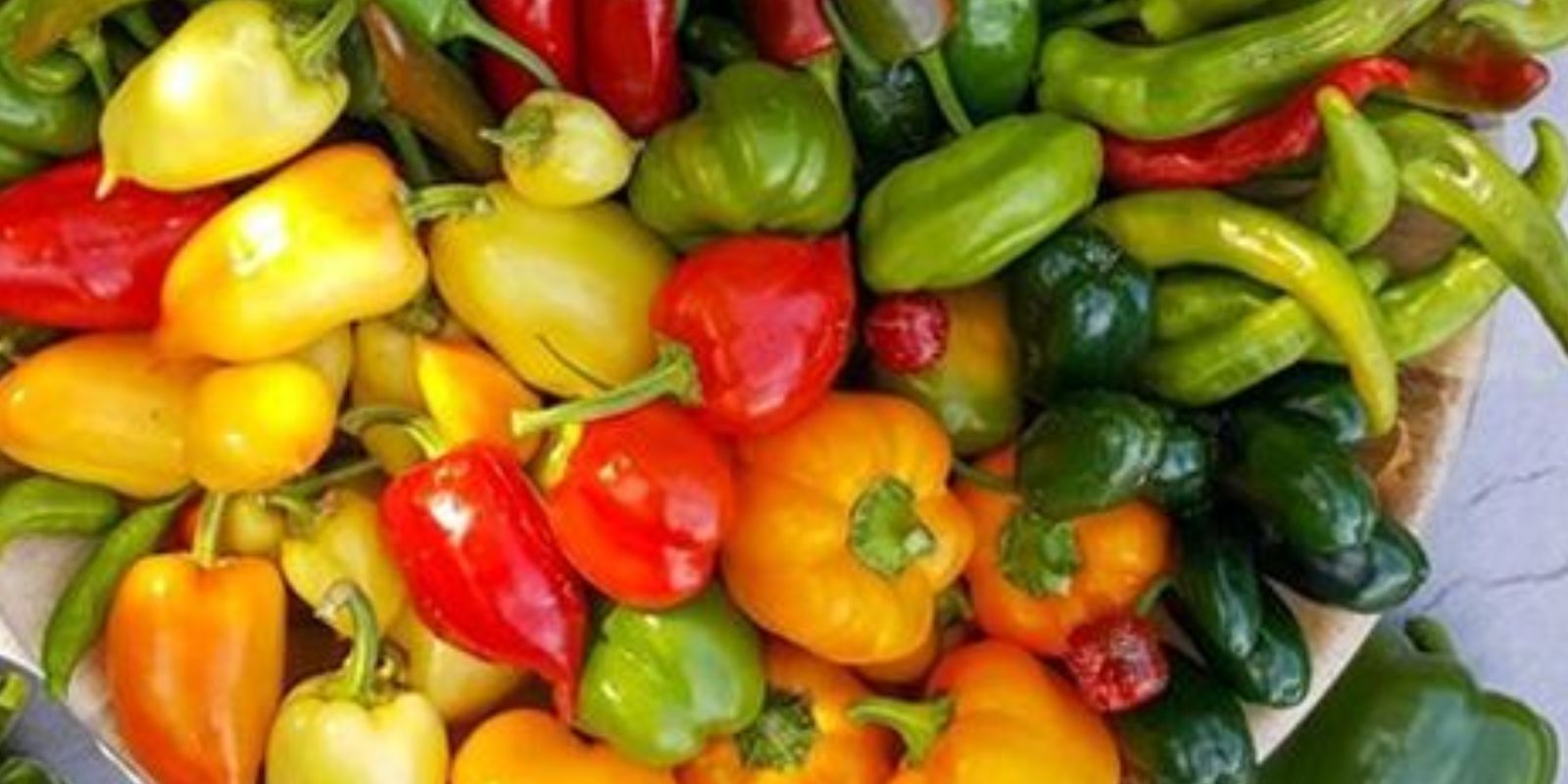Introduction
Growing peppers in your garden can be incredibly rewarding. Whether you prefer sweet bell peppers, spicy jalapeños, or something in between, peppers are a versatile and vibrant addition to any garden. However, growing them to their full potential requires a bit of knowledge and care. In this guide, we’ll share six amazing secrets that will help you grow peppers that are faster, bigger, and better. Follow these tips to maximize your pepper harvest and enjoy a bountiful season.
1. Start Seeds Early Indoors
One of the key strategies for growing peppers successfully is to start seeds early indoors. Peppers have a long growing season and require warm temperatures to germinate and grow.
Why Start Early?
- Extended Growing Season: Starting seeds 8-10 weeks before the last frost date allows plants to develop before being transplanted outside.
- Controlled Environment: Growing indoors lets you control temperature, light, and humidity, providing the best conditions for seedlings.
How to Start Seeds
- Seed Selection: Choose pepper varieties suited to your climate and taste preferences. Heirloom varieties can offer unique flavors and colors.
- Soil and Containers: Use seed-starting mix in small pots or seed trays. Ensure containers have drainage holes.
- Planting: Sow seeds 1/4 inch deep, cover lightly with soil, and water gently.
- Temperature: Keep soil temperature between 70-80°F for optimal germination. A heat mat can help maintain consistent warmth.
- Light: Once seeds germinate, provide 14-16 hours of light daily using grow lights.
2. Choose the Right Soil
The quality of the soil significantly impacts the growth and yield of pepper plants. Peppers thrive in well-draining, nutrient-rich soil.
Soil Preparation
- Soil Composition: A mix of loamy soil, compost, and aged manure provides essential nutrients and good drainage.
- pH Level: Aim for a soil pH between 6.0 and 7.0. Test your soil and amend it if necessary.
- Organic Matter: Adding compost improves soil structure, fertility, and moisture retention.
Planting in the Ground or Containers
- Ground: Prepare garden beds by incorporating organic matter and ensuring good drainage.
- Containers: Use large pots with drainage holes. Fill with high-quality potting mix enriched with compost.
3. Warm Up the Soil
Peppers are warm-season crops that thrive in warm soil. Ensuring your soil is adequately warm can speed up growth and improve yields.
Techniques to Warm the Soil
- Black Plastic Mulch: Cover garden beds with black plastic mulch before planting. This absorbs sunlight and warms the soil.
- Raised Beds: Raised beds warm up faster than in-ground gardens, making them ideal for growing peppers.
- Timing: Wait to transplant seedlings until the soil temperature is consistently above 60°F, ideally around 70-80°F.
4. Consistent Watering
Proper watering is crucial for healthy pepper plants. Both overwatering and underwatering can stress plants and reduce yields.
Watering Tips
- Deep Watering: Water deeply to encourage deep root growth. Shallow watering can lead to weak roots.
- Frequency: Water regularly, keeping the soil consistently moist but not waterlogged. The frequency will depend on your climate and soil type.
- Methods: Drip irrigation or soaker hoses provide steady moisture without wetting foliage, reducing the risk of fungal diseases.
5. Feed Regularly
Peppers are heavy feeders and benefit from regular fertilization throughout the growing season.
Fertilization Strategy
- Balanced Fertilizer: Use a balanced fertilizer (such as 10-10-10) or one specifically formulated for vegetables.
- Application: Start fertilizing when plants are 6-8 inches tall. Apply every two weeks according to the manufacturer’s instructions.
- Organic Options: Compost tea, fish emulsion, and other organic fertilizers can provide nutrients while improving soil health.
6. Prune for Productivity
Pruning pepper plants can enhance their health and productivity by encouraging better airflow and focusing the plant’s energy on fruit production.
Pruning Techniques
- Remove Early Flowers: Pinch off the first few flower buds. This encourages the plant to focus on growing strong roots and foliage before producing fruit.
- Lower Leaves: Remove any leaves that touch the ground to prevent disease and improve airflow.
- Suckers: Trim suckers (small shoots that grow between the main stem and branches) to concentrate growth on the main stems.
Troubleshooting Common Issues
Even with the best care, you may encounter some challenges when growing peppers. Here are solutions to common problems:
Pests
- Aphids: Spray with insecticidal soap or introduce beneficial insects like ladybugs.
- Cutworms: Use collars around seedlings to prevent cutworms from severing young plants.
- Spider Mites: Increase humidity and use miticides if necessary.
Diseases
- Blossom End Rot: Ensure consistent watering and adequate calcium levels in the soil.
- Powdery Mildew: Improve air circulation and use fungicides if needed.
- Bacterial Spot: Remove affected leaves and avoid overhead watering.
Harvesting and Enjoying Your Peppers
Once your pepper plants start producing, harvesting can begin. Here’s how to ensure you get the best from your crop:
Harvesting Tips
- Maturity: Peppers can be harvested at various stages of ripeness, depending on the desired flavor and color.
- Cut, Don’t Pull: Use scissors or pruning shears to cut peppers from the plant, leaving a small portion of the stem attached.
- Regular Picking: Harvest regularly to encourage continuous production.
Using Your Peppers
- Culinary Uses: Fresh peppers can be used in salads, salsas, stir-fries, and more. They can also be roasted, grilled, or stuffed.
- Preservation: Preserve peppers by drying, pickling, or freezing for use throughout the year.
Conclusion
Growing peppers faster, bigger, and better is achievable with the right techniques and care. By starting seeds early, using quality soil, warming the soil, providing consistent watering, feeding regularly, and pruning effectively, you can enjoy a bountiful harvest of delicious peppers. These vibrant plants will not only enhance your garden’s beauty but also add flavor and nutrition to your meals. Happy gardening! 🌶️🍀

